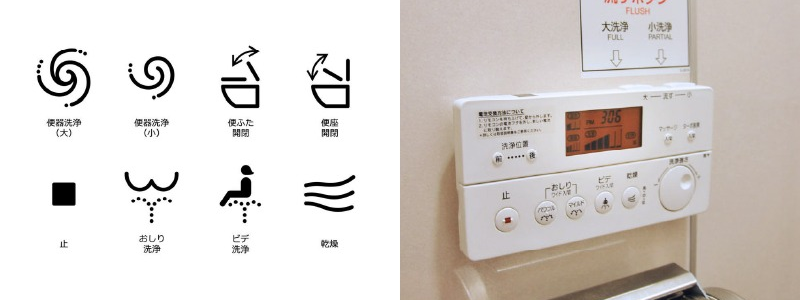
How did Japanese bidet toilets become so popular?
Anyone who’s visited Japan can vouch for its clean streets, buses, and subways. Take Tokyo for example—the Japanese capital is remarkably tidy despite being a bustling metropolis. How does Japan do it? It’s easy to maintain urban neatness when littering is a cultural no-no. Despite having few trash cans, Japan’s public spaces remain relatively pristine—thanks to the good, clean habits of the Japanese people.
Cleanliness and tidiness are important aspects of Japanese culture. Citizens volunteer to clean up public spaces, says the BBC. Commuters wear face masks to prevent the spread of germs (and did so before the coronavirus pandemic). Life at home is equally hygienic. People remove their shoes before going indoors—and wear a separate set of slippers in the bathroom. These are all examples of how neatness and hygiene are integral to the Japanese identity.
Knowing that, it’s no wonder the Japanese were early adopters of the bidet. What’s a bidet? Simply put, it’s a toilet attachment or separate fixture that washes “down there” with water. Using one enhances personal hygiene in a way that toilet paper can’t—which may account for their popularity in Japan.
Origins of the modern Japanese bidet
Though bidets are extremely popular in Japan, they are not a Japanese invention. Cultures worldwide have been using bidets in one form or another for centuries. The modern bidet as we know it was invented in Brooklyn, New York, by a man named Arnold Cohen. Released in the 1960s, Cohen’s “American Sitzbath” was a toilet seat, bidet, and warm air dryer all in one—giving users an easy, hands-free way to wash with water after going to the bathroom.
Cohen was ahead of his time, it seemed, as his invention didn’t achieve commercial success. It did, however, catch the eye of a Japanese company called Nichimen Jitsugyo, which made a deal to sell Cohen’s invention in Japan. First released in 1967, “the Wash Air Seat” was a bit of a flop at first, according to Scientific American—but it did help prime the Japanese market for bidet adoption in the 1980s and beyond.

Japanese style bidets today
Imagine visiting a friend or relative's house and walking into their bathroom. Would you find a bidet? If you lived in Japan, the answer would be yes—most likely. Since the 1980s, the bidet went from being an innovative curiosity to a Japanese bathroom essential. By 2015, around 76 percent of Japanese households had a bidet.
That said, the modern Japanese bidet has come a long way from Cohen’s original invention. Some play relaxing music to drown out embarrassing bathroom noises. Others have no-touch automatic lids and air conditioning (yes, you read that right). Some even double as medical devices, monitoring sugar levels in urine and blood pressure via seat sensors. In the West, toilets were designed to serve 1 purpose—disposing of waste. With the bidet, the Japanese reimagined the Western toilet to improve wellbeing, comfort, and hygiene, too.
Bidet usage in America today

Eventually, word got out about Japan’s innovative bidets. These luxurious bathroom fixtures garnered international buzz—even in America, where bidets had failed to catch on in the 1960s. Thankfully, American companies took notice and began creating bidets for North American consumers.
These days, you don’t have to travel to Japan to get a bidet. Getting a bidet in America is as simple as placing an order online. They’re also available at many North American hardware stores, like Home Depot and Lowe’s.

Does that mean North America has completely caught up with Japan bidet-wise? Not exactly. There are still more bidets in Japan than in North America. But bidets are getting more popular in the United States and beyond, perhaps because the word is out about their many benefits. Toilet paper just can’t clean as well as water—something the Japanese have known for decades. Bidets also allow you to use less TP in general, which is good for your wallet and the planet.
Join the fresh-and-clean revolution
Our toilets may not play music (not yet anyway). But bidets are catching on in North America—and for good reason. They’re easy to install and available in many options, including handheld sprayers, attachments that fit under your seat, and toilet seat/bidet combos for every budget. Check out our blog to learn about each type and find the perfect bidet today.
